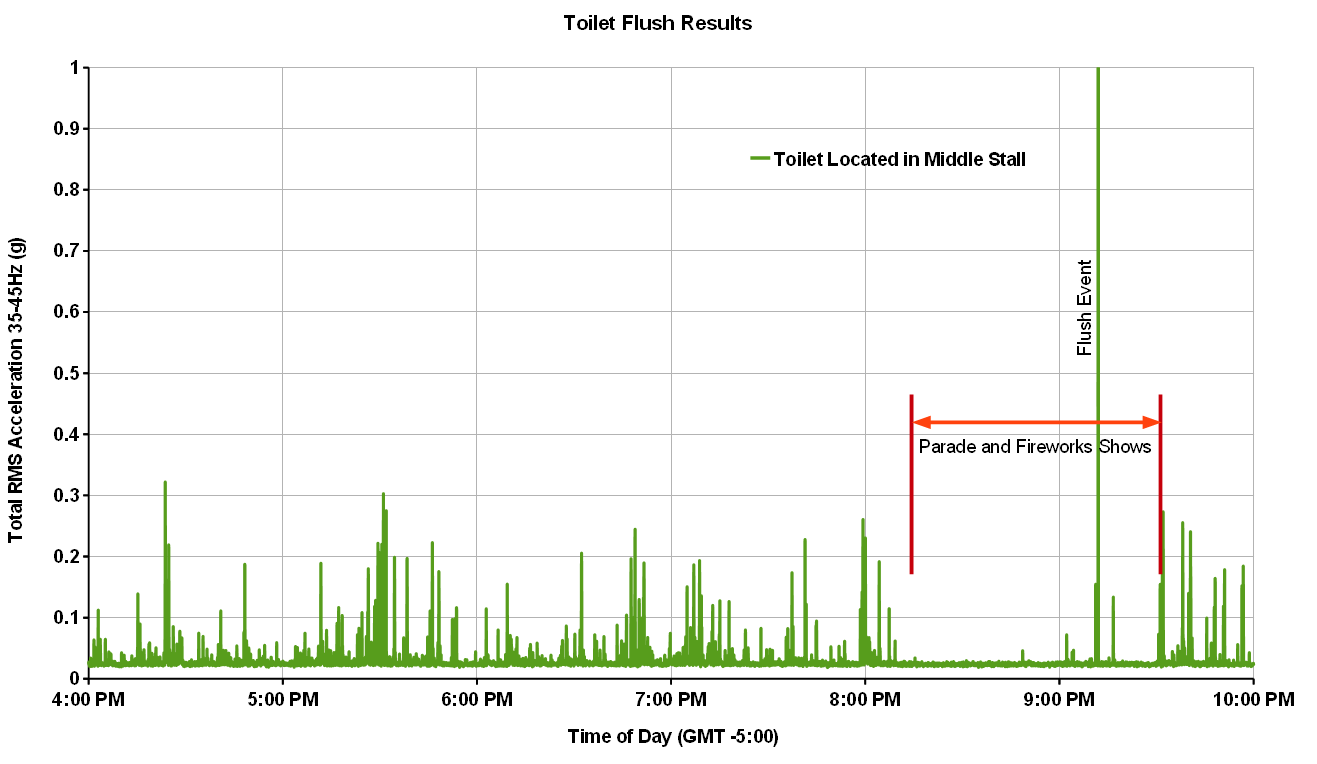Introduction

We all do it. Sitting on the throne, contemplating the world's mysteries. How many flushes occur throughout a given day at a public restroom? Well, wonder no more. Our crack field engineers used the X2-5 logger to monitor the flush cycles at a busy restroom located at Walt Disney World. Yes, we went there.
A detailed description of the test procedure, analysis method, and results are documented in our test report Detecting Toilet Flushes in a Restroom.
Objective
This experiment uses the X2-5 accelerometer logger to monitor the flush activity of a public restroom toilet.
Procedure
The excellent sensitivity of the X2 accelerometer affords the detection of very low amplitude vibrations. In this case, the X2 was used to capture the vibration of water flushing through a toilet.
A restroom with high traffic in a crowded location was selected at Walt Disney World in Florida. The selection helped justify the 600 mile drive, condo rental, park tickets, and fun-filled research expedition. We chose the first restroom upon entering the Magic Kingdom theme park. This particular men's restroom was configured with three side-by-side stalls. The logger was attached to the toilet in the middle stall. The logger was placed underneath the toilet near the water inlet such that the logger was concealed.
Results
The data was processed into the frequency domain and the spectral response summed in a specific band. Initial findings indicated that the water inlet vibrated in the 10-50 Hz range. Isolating the 35-45 Hz range removes some of the influence of neighboring toilets. An R script similar to the analysis used in the train vibration experiment processed all the data files. The results were exported into Excel for plotting purposes.
The analysis determined the occurrence of at least one flush at the test toilet as well as other toilets in the same restroom. The results illustrate the overall loading conditions at this restroom throughout the evening from 4pm to 10pm. The period of inactivity from 8:15-9:30 coincides with the evening parade and fireworks. The event at approximately 9:15pm was the most likely case for a flush at the test toilet.

Discussion
The overall results show clear indication of activity in the restroom, which could be valuable information for cleaning and maintenance scheduling. Unfortunately, a baseline flush from the test toilet was not characterized first. The response from other nearby toilets was not expected, and this interfered with determining the flush occurrence of the particular test toilet. If this test is repeated, all of the toilets should be flushed individually several times to characterize the typical vibration responses.